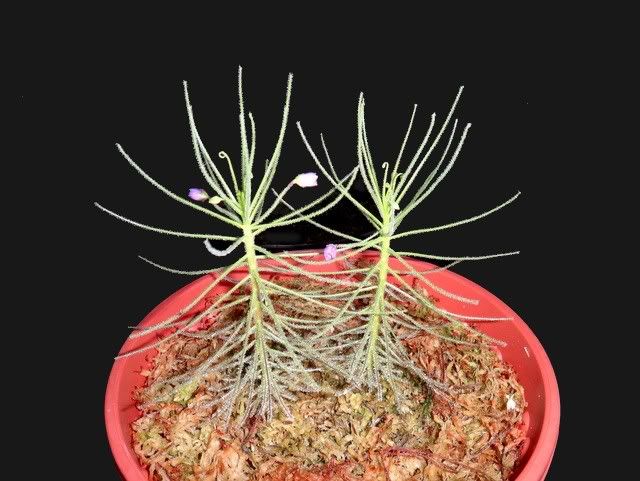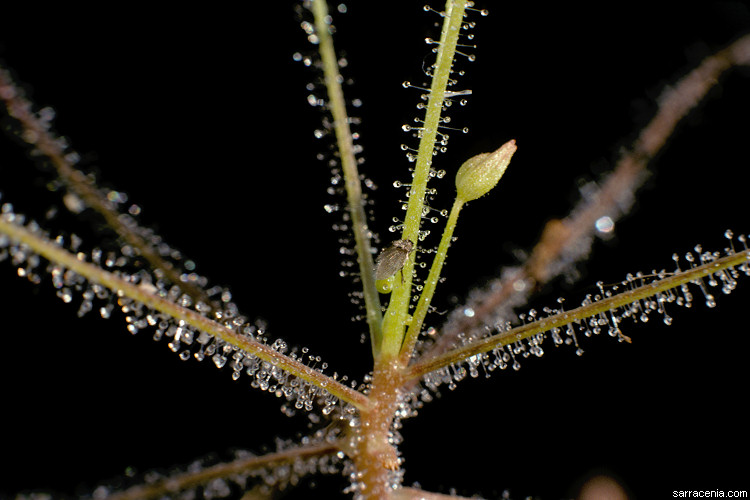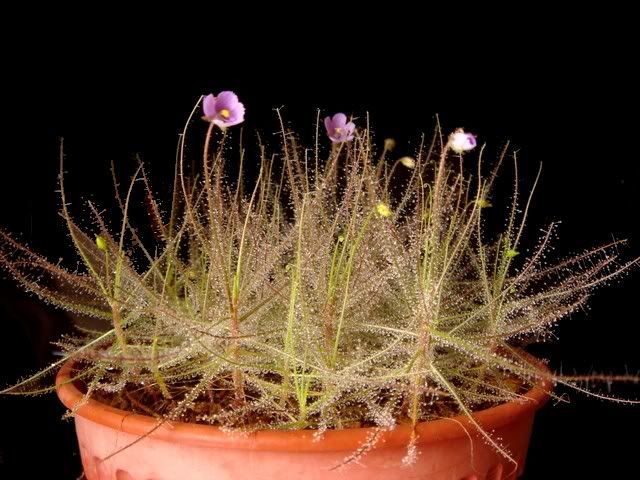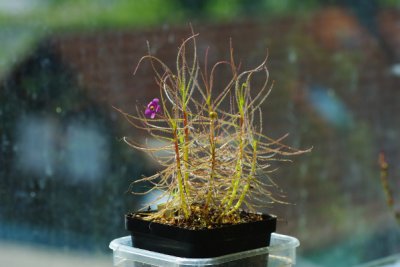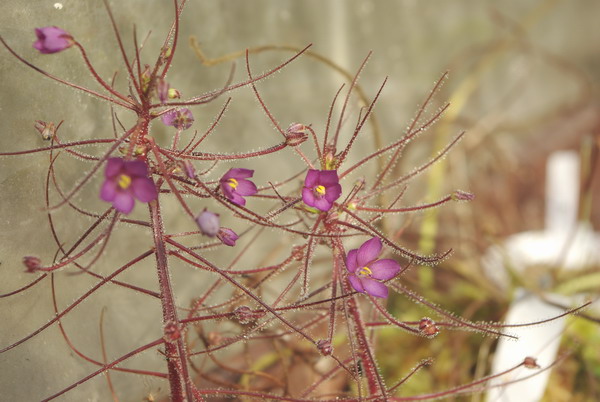Byblis aquatica
Byblis aquatica
Byblis aquatica is a carnivorous plant species of the genus rainbow plants in the family of the rainbow plants plants ( Byblidaceae ). It was described in 1998 by the botanist Allen Lowrie and John Godfrey Conran and is one of the year, northern Australia Byblisarten, which are collectively referred to as " B. liniflora complex".
Features
Byblis aquatica is an annual, usually unbranched plant, their roots are fine grained. It reaches a height of up to 45 centimeters, young, small plants up to 5 cm stand upright, middle-aged to about 15 centimeters in length lean on neighboring plants, more great lie on the ground or float in the water, with the upper part of the plant always grows erect.
The leaves are two to four inches long, terete, tapering towards the end. Young leaves are almost upright, light green, but dark purple to red brown quickly after. With age, the leaves hang increasingly to wilt down and begin. From the approach to the end they are completely covered with stalked glands that secrete a sticky liquid. In addition to catching insects, they also serve the adhesion to neighboring plants and thus keep the plant upright.
Flowers
For some leaf axils grow above the sheet approach flower stalks, which hardly differ from the leaves, however, are slightly shorter with 1.5 to 3 centimeters. At their peak bloom from January to May ( in the Australian summer) terminal fivefold single flowers, only a few but at the same time.
The egg-shaped, almost glabrous sepals are 3-4 mm long. The reverse- egg-shaped petals are deep purple, 5-7 mm long and up to 4.5 millimeters wide and notched on the outer edge. The stamens are 2 to 2.5 millimeters, the yellow anthers 0.9 to 1.3 millimeters long. The stylus is 2 to 2.5 mm long, the stigma is papillate.
Fruit and seeds
The 3 to 4 mm long and 2.5 to 4 millimeters wide seed capsule is broadly ovate and zweifächrig, by drying it tears on gradually, so that the seeds contained to the ground or into the water fall ( Barochorie or Hydrochorie ). The black, 1 to 1.3 mm long seeds are longitudinally furrowed.
Dissemination
The species has a very small distribution area in Australia's Northern Territory, it is endemic between Darwin and Berry Springs, but there is frequent. It grows in loamy sand in seasonally flooded depressions and the shallow shores of freshwater lagoons and is frequently associated with B. liniflora which, however, always somewhat removed is of the semi- aquatic locations of Byblis aquatica.
Botanical history
Byblis aquatica was first collected in April 1988 by Allen Lowrie at the Howard River. In cultures of Karnivorenliebhabern it was as Byblis aff. liniflora " Darwin " and classified as ecotype. Only after Barry Meyers -Rice taught evidence for reproductive isolation of the species, suggested Flísek January 1996, the description as a separate species, which shall then wrote Allen Lowrie as part of its revision of the North Australian species in 1998.
Swell
- Allen Lowrie, John G. Conran: A Taxonomic Revision Of The Genus Byblis ( Byblidaceae ) In Northern Australia, in: Nuytsia 12 ( 1) :59 -74, 1998
- John G. Conran, Allen Lowrie: B. liniflora subsp. occidentalis ( Byblidaceae ), A New Subspecies From North - Western Australia, in: Austral. Syst. Bot 6, p. 175-179, 1993
Further Reading
- Barry Meyers -Rice: Byblis - Notes on Forms New To Cultivation, in: Carnivorous Plants Newsletter, 22, p. 39-40
- January Flísek: Byblis aff. liniflora "Darwin" - Novy druh rodu Byblis, in: Trifid, Darwiniana, 4, 27-28, 43?


